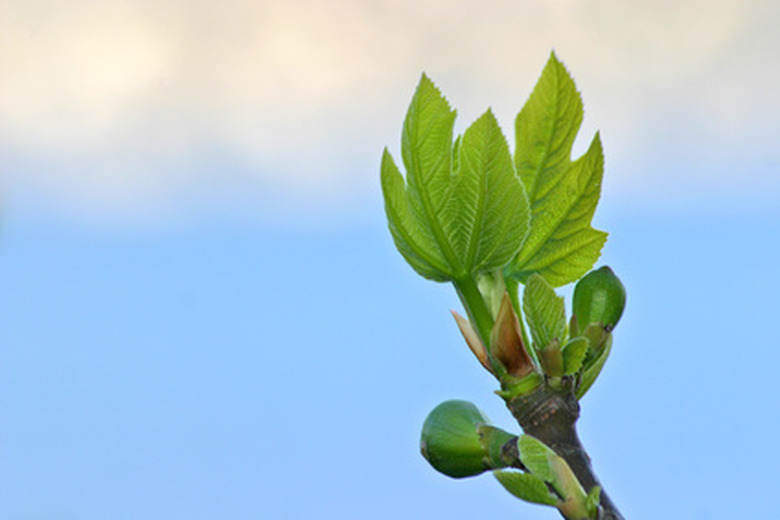How To Prune Fig Trees In California
Things Needed
- Garden clippers
- Garden loppers
- Tree saw
- Chain saw (optional)
- Ladder (optional)
Figs have been a popular fruit for many centuries. Originating in western Asia, the fig was introduced to temperate climate regions surrounding the Mediterranean Sea, and quickly spread to many other locales, including warmer parts of California. The fig tree is quite hardy—if temperatures as low as zero degrees Fahrenheit occur while the tree is in its dormant season, it will often rejuvenate from its root system when spring arrives. This trait shows that you can prune the fig tree severely and expect it to recover with a flush of healthy new growth.
Step 1
Prune your fig tree during winter when it is young. Cut it to a height that makes it attractive and enables you to easily reach the fruit on higher branches.
Step 2
Cut branches where they connect to the main trunk, but avoid cutting into the "branch collar," which is a raised, knobby "bump" where the branch connects to the trunk. Make your cuts clean by using the appropriate tool for the job. Use small clippers for small branches, loppers for medium branches and a tree saw or chainsaw for very large branches.
- Figs have been a popular fruit for many centuries.
- This trait shows that you can prune the fig tree severely and expect it to recover with a flush of healthy new growth.
Step 3
Prune older trees after you harvest the last figs of fall. Certain varieties of figs produce their fruit in late summer and into the fall—the California Rare Fruit Growers Association advises to "summer prune half the branches and prune the remainder the following summer."
Step 4
Paint your fig tree with whitewash if you do any "radical" pruning, according to the California Rare Fruit Growers Association. You might need to cut your tree almost to the ground if it becomes infested with certain insects, such as mites or beetles.
Tip
Different schools of thought exist on the wisdom of using pruning tar or roofing tar to seal the wounds made when you prune tree branches. Some people swear by this practice, but others, such as those at High Country Gardens, advise against it because doing so might seal in insects or microbes that cause disease. They say, "Don't use pruning tar. This encourages disease problems by keeping the wound damp. Instead, leave the cut open to the air and allow the plant to callus over its wound."
Warning
Avoid heavy pruning after your tree takes the shape and size you want because doing so can affect the following summer's crop—the fig tree produces fruit on the "terminals of previous year's wood," according to the California Rare Fruit Growers Association, so if you value your fig harvest, keep your pruning to a minimum.
